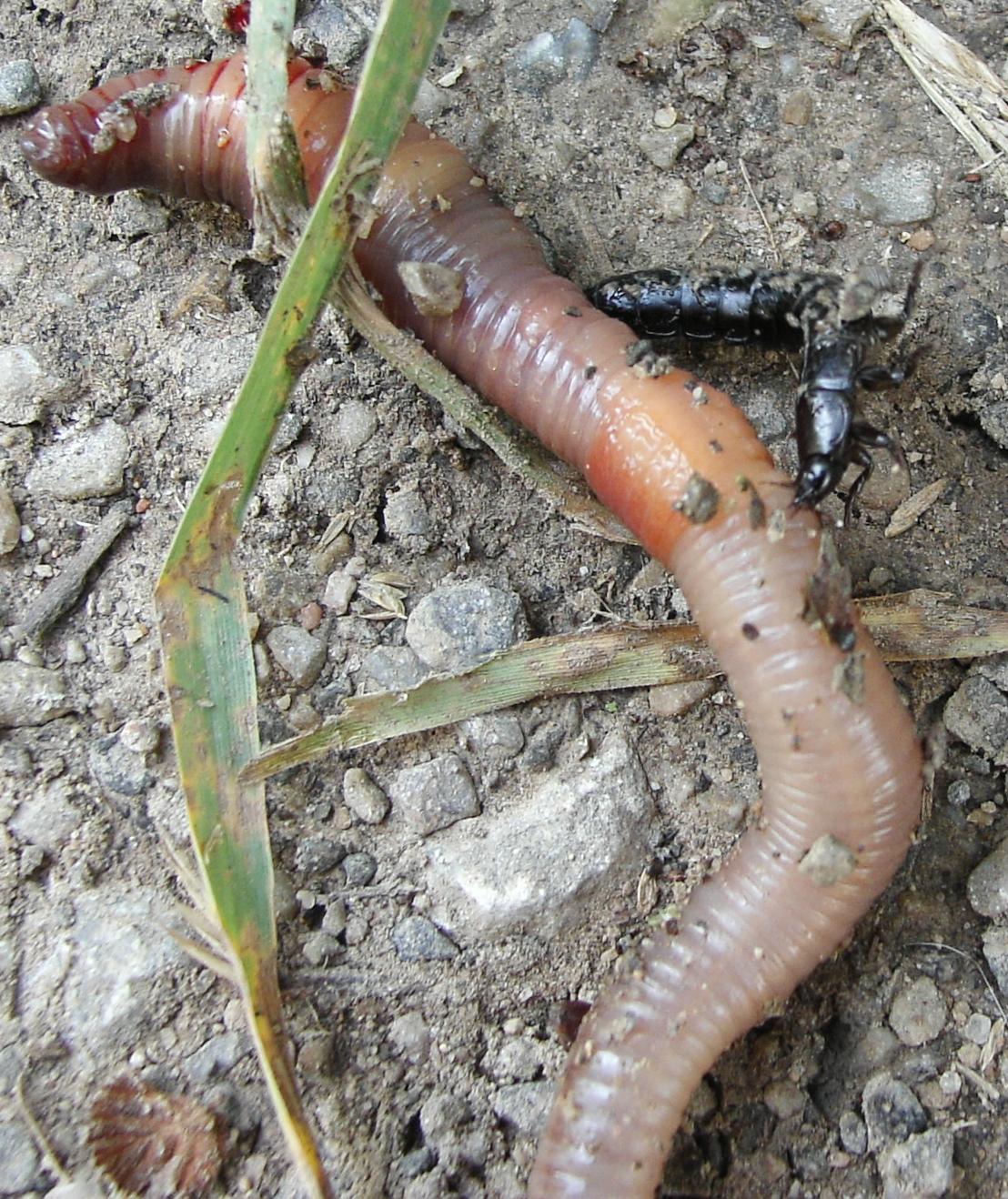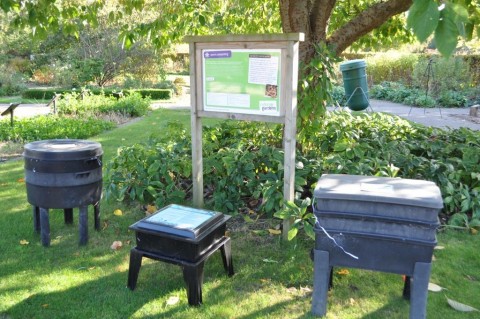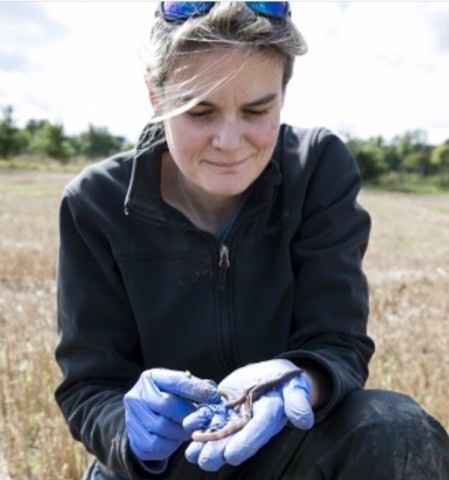Earthworms are food for many animals, most people will have seen a bird tugging an earthworm from the ground, or even gulls drumming their feet to bring earthworms up to the surface. Earthworms are also a major food source for moles, badgers, hedgehogs and foxes but there are many smaller animals that feed on earthworms.
The true flies or diptera are insects with only one pair of wings, and include the familiar house flies, mosquitoes and midges but are an enormously diverse group with over 7,000 species in the UK alone. The young stage or larva of a fly is called a maggot, and some of these are predators or parasites of earthworms. The most well-known earthworm parasites are the cluster flies Pollenia sp. in the family Calliphoridae, the same family as bluebottles. Although harmless to humans Pollenia can sometimes be a nuisance as they congregate in large numbers in buildings to hibernate over winter. Once a Pollenia larva hatches from its egg it tracks earthworms by smell and when it finds one, buries into it to feed on the earthworm’s insides. The fly larva may eat several earthworms before it pupates and hatches into an adult fly.
A wide variety of other fly larvae are reported to feed on earthworms, including Bellardia and Onesia which are related to Pollenia. The larvae of some Sarcophaga flesh flies, some Phoridae scuttle flies, the housefly Coenosia tigrina and stiletto flies Therevidae are also known to feed on earthworms. Some beetles are predators of earthworms, especially larger ground beetles (Carabidae) and rove beetles (Staphylindae) such as the devil’s coach horse (Ocypus olens). Centipedes are also known predators of earthworms and although it may seem unlikely there are even reports of spiders eating earthworms.
The semi-slug Testacella is so called because it has only a tiny shell on its ‘tail’. This mollusc specialises in eating earthworms and can squeeze into small gaps in the soil after them and consuming them like a string of spaghetti. Leeches are mostly known for drinking blood, but some are predators and eat smaller animals whole, including earthworms. Leeches are actually closely related to earthworms so it is a case of worm eat worm!
All these animals are a normal part of the environment and are not known to cause any reduction in earthworm populations or soil problems. The exception is when new predators are introduced which in the UK has occurred with some flatworms, particularly the New Zealand flatworm Arthurdendyus triangulatus. This flatworm species has caused reduction in earthworm numbers in some areas, especially in Scotland, and scientists are looking for help to track its spread. If you find any while doing your Earthworm Watch survey, report them at the New Zealand Flatworm survey.
The New Zealand Flatworm survey is not affliated with Earthworm Watch. Earthworm Watch has been developed by Earthwatch (Europe), The Natural History Museum and the Earthworm Society of Britain to better understand the ecosystem benefits of earthworms. Earthworms recycle decaying organic material to improve soil fertility, they aerate the soil to create space for air and water through their burrowing actions which can prevent flooding and store carbon in fragments in the soil. Earthworm Watch allows the public to help scientists map their abundance, better understand the human impact on their populations and with further research measure the services these ‘ecosystem engineers’ provide.





